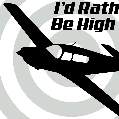Mooney for you, different plane for the family?
-
Members Online
- Fix
- OR75
- amillet
- philiplane
- GarrettL
- MB65E
- Stubby
- good2eat
- Captainhog
- Jayrod
- Greg Ellis
- Mellow_Mooney
- da3b242
- TJB35
- toto
- dzeleski
- goodyFAB
- Zippy_Bird
- Echo
- dkkim73
- Jerry 5TJ
- LANCECASPER
- katzhome
- gevertex
- Nanette David
- TCC
- Medflyer
- mooneyflyfast
- N201MKTurbo
- Don Stanley
- Utah20Gflyer
- 00-Negative
- hubcap
- Joseph Long
- Matt_AZ


Recommended Posts
Join the conversation
You can post now and register later. If you have an account, sign in now to post with your account.